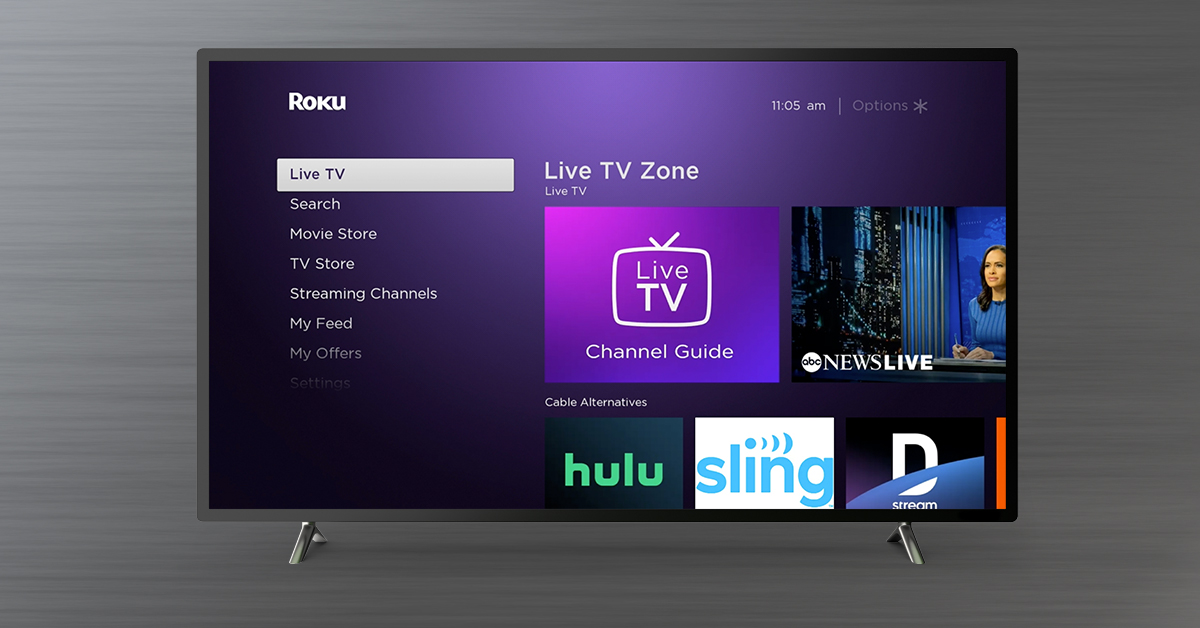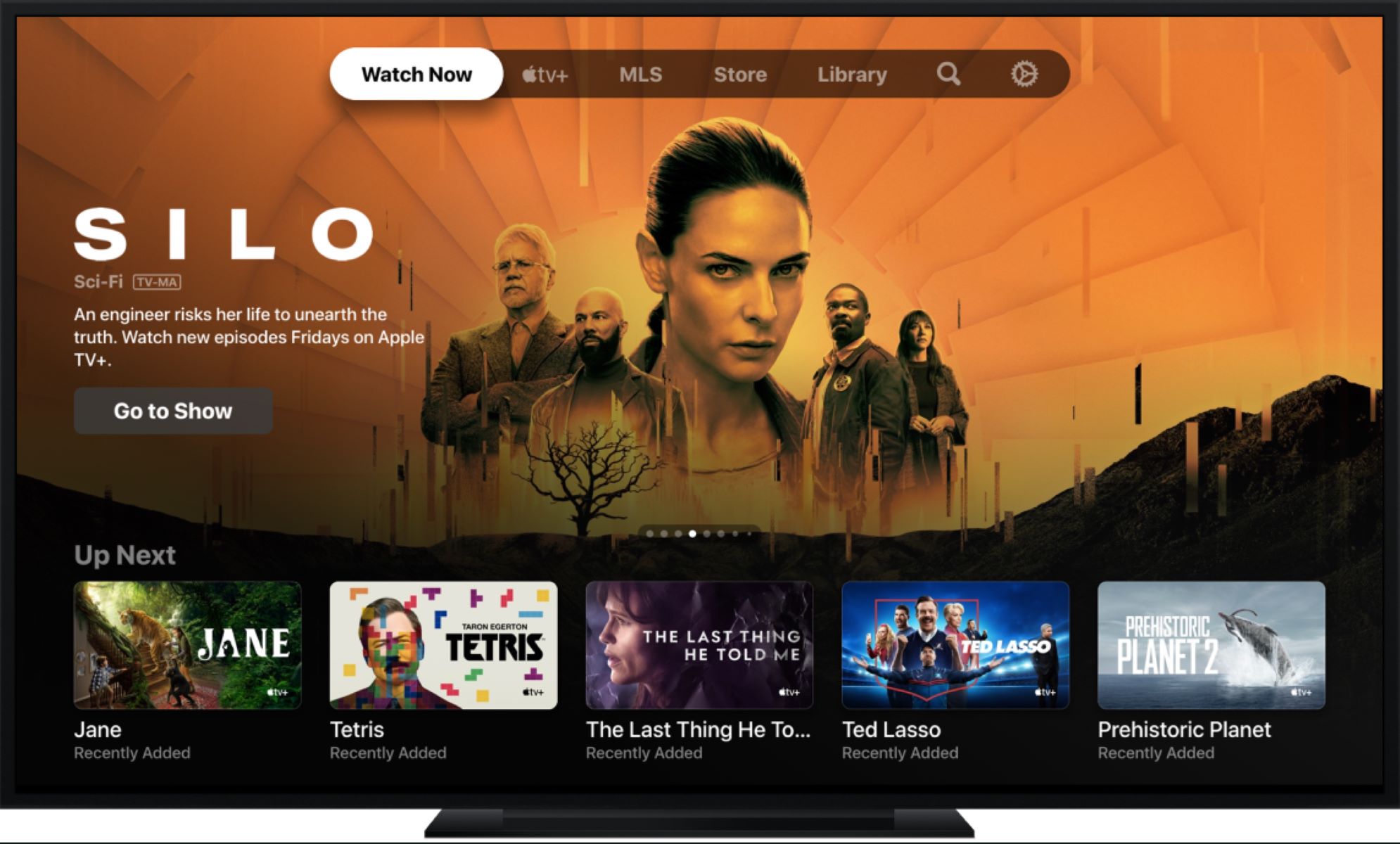Introduction
Welcome to the world of free television! With today’s technological advancements, you no longer have to rely solely on expensive cable or satellite subscriptions to enjoy your favorite TV shows and movies. There are numerous ways to watch TV for free, and in this article, we will explore various methods and strategies to help you do just that.
Whether you’re looking to cut costs, reduce your reliance on paid subscriptions, or simply explore new options, these techniques will allow you to access a wide range of content without spending a dime. From over-the-air broadcasts to streaming services and free apps, there are plenty of opportunities to keep up with your favorite shows and enjoy the latest releases.
By following the steps outlined in this article, you’ll be able to create a personalized television experience that meets your entertainment needs without breaking the bank.
Keep in mind that while the methods discussed in this article are legal and accessible, the availability of free television content may vary depending on your location and the specific services you choose to utilize. Nevertheless, with a little bit of effort and experimentation, you’ll be well on your way to enjoying hours of free entertainment from the comfort of your own home.
So, let’s dive into the exciting world of free TV and explore the various ways you can start enjoying your favorite shows and movies without spending a penny.
Choosing an Antenna
One of the oldest and most reliable methods of accessing free television is through an antenna. With the vast majority of TV stations broadcasting over the airwaves, a properly installed antenna allows you to receive these signals and enjoy a variety of channels.
When selecting an antenna, it’s important to consider a few key factors. Firstly, determine whether you need an indoor or outdoor antenna based on your location and signal strength. Urban areas with proximity to transmission towers can often get by with an indoor antenna, while rural areas might require a more robust outdoor antenna.
Next, consider the type of antenna that best suits your needs. There are several options available, including rabbit ear antennas, loop antennas, and multidirectional antennas. Each type has its own strengths and weaknesses, so it’s worth doing some research to find the one that matches your specific requirements.
Another essential aspect to consider is the range and reception capabilities of the antenna. Look for models that offer a wide range of frequencies and have a high gain to ensure optimal reception. Additionally, check if the antenna is compatible with both VHF (Very High Frequency) and UHF (Ultra High Frequency) channels to maximize the number of channels you can receive.
Installing the antenna correctly is equally important. Position it in a location with minimal interference, such as high up on a wall or near a window facing the direction of the closest transmission towers. Experiment with different placements and orientations to find the best position for optimal signal reception.
Once you’ve chosen and installed your antenna, the next step is to scan for available channels. Most modern TVs have a built-in channel scanning feature that allows you to automatically search for and store available channels. This process may take a few minutes, but it’s essential to ensure you’re capturing all the available over-the-air broadcasts.
By choosing the right antenna for your location and optimizing its placement, you can unlock a wide array of free channels to enjoy without having to rely on paid subscriptions or streaming services. With just a small upfront investment, you’ll have access to local news, sports, and entertainment, all at no additional cost.
Positioning the Antenna
Once you’ve selected the appropriate antenna for your needs, the next crucial step is positioning it correctly to ensure optimal reception and channel availability. Proper antenna placement can make a significant difference in the quality and number of channels you receive.
Here are some key considerations when positioning your antenna:
- Location: Find a suitable location for your antenna, preferably near a window or on an exterior wall facing the transmission towers. The higher your antenna is positioned, the better chances you have of receiving a strong and uninterrupted signal. Avoid placing the antenna near large obstacles, such as buildings or trees, that may obstruct the signal.
- Orientation: Experiment with the antenna’s orientation to determine the best position for optimal reception. Some antennas are designed to be omnidirectional, meaning they can receive signals from various directions. In contrast, others are directional and require precise alignment towards the signal source. Adjust the antenna’s direction to achieve the best signal strength and clarity.
- Adjustable Antenna Elements: If you’re using an outdoor antenna with adjustable elements, try tweaking the length and position of these elements to improve reception. Shortening or lengthening specific elements can help fine-tune your reception, especially if you notice certain channels are weaker or unstable.
- Signal Strength and Interference: Use a signal strength meter or the signal strength indicator on your TV to assess the quality of the received signals. While adjusting the antenna position, keep an eye on signal strength changes. Avoid positioning the antenna too close to metallic objects, electrical devices, or other sources of interference that can degrade the signal quality.
Remember that finding the ideal antenna position may require some trial and error. You may need to try different locations and orientations until you achieve the best results. Consider using an antenna rotor or mounting the antenna on a rotating pole if you want to capture signals from different directions without physically readjusting the antenna.
By taking the time to position your antenna correctly, you can achieve maximum signal reception and enjoy a wide range of free television channels. Once you’ve found the optimal placement, move on to the next step of scanning for channels to unlock a world of free entertainment.
Scanning for Channels
After positioning your antenna in the optimal location, it’s time to scan for available channels. This process allows your television to detect and store the available over-the-air broadcasts, giving you access to a variety of free TV channels.
Here’s how you can scan for channels on your TV:
- Access the Menu: Using your TV remote, navigate to the menu options or settings on your television.
- Select Antenna or Tuner: Look for the option that corresponds to your antenna or tuner settings. It may be labeled as “Antenna,” “Air,” “Broadcast,” or something similar.
- Choose Auto Scan or Auto Program: Once you’ve accessed the antenna or tuner settings, select the option for “Auto Scan” or “Auto Program.” This function tells your television to search for available channels and store them in its memory.
- Start the Scan: Initiate the scanning process by selecting the “Scan” or “Start” button on your TV screen. The TV will then begin searching for signals and scanning for available channels.
- Wait for Completion: Allow the scanning process to complete fully. This may take a few minutes, depending on your television model and the number of channels being scanned.
- Save and Organize Channels: Once the scan is complete, your TV will display a list of detected channels. Save and organize the channels as desired, grouping them into favorites or assigning channel numbers for easy navigation.
It’s important to note that channel availability may vary depending on your location and the strength of the signals received. You may receive different channels based on your proximity to transmission towers.
If your TV scans a limited number of channels or if the signal quality is poor for certain channels, consider revisiting the positioning of your antenna or upgrading to a more powerful antenna to improve reception. Adjusting the antenna’s orientation or height may also help capture additional channels.
By scanning for channels, you unlock a plethora of free television content, including local news, sports, movies, and more. Take the time to explore the channels you now have access to and enjoy the fantastic world of free TV at your fingertips.
Using Streaming Services
In addition to traditional over-the-air broadcasts, streaming services have revolutionized the way we consume television content. While many streaming platforms require a subscription fee, there are several free streaming services available that offer a vast collection of movies, TV shows, and original programming.
Here are some popular free streaming services worth exploring:
- Tubi: Tubi is a free streaming service that offers a wide range of movies and TV shows. It features a diverse library of content across various genres, including popular classics, independent films, and documentaries.
- Crackle: Crackle is another free streaming platform that provides a selection of movies, TV shows, and original programming. While its library may not be as extensive as some paid services, it still offers a decent range of content across different genres.
- Pluto TV: Pluto TV offers a unique streaming experience with its live TV channels and on-demand content. It features a wide range of channels with a variety of programming, including news, sports, entertainment, and lifestyle content.
- IMDb TV: IMDb TV is an ad-supported streaming service that provides access to a wide range of movies and TV shows. It offers a mix of popular titles and underrated gems, making it a great option for cinephiles.
- Crunchyroll: If you’re a fan of anime and Asian dramas, Crunchyroll is a fantastic free streaming service to explore. It offers a vast collection of anime series, manga adaptations, and Asian dramas, catering to a niche audience.
When using free streaming services, keep in mind that they are supported by ads. Expect occasional commercial breaks during your viewing experience. While these ad interruptions may be a small inconvenience, they are a small price to pay for the abundance of free content available.
It’s also worth noting that these services may have regional availability restrictions, and their content libraries may differ based on your location. However, with a VPN (Virtual Private Network) service, you can bypass these restrictions and access a more extensive range of content.
By exploring free streaming services, you can access a wide variety of entertainment options without subscribing to costly cable packages or premium streaming sites. Take the time to browse through their catalogs, discover new shows and movies, and enjoy hours of free streaming content at your convenience.
Utilizing Free Apps and Websites
In today’s digital age, there are numerous free apps and websites that provide access to an incredible array of TV shows, movies, and other video content. These platforms offer a convenient way to enjoy entertainment on various devices, such as smartphones, tablets, and computers.
Here are some popular free apps and websites you can utilize to watch TV for free:
- Pluto TV: As mentioned earlier, Pluto TV combines live TV channels with on-demand content. It has a user-friendly interface and offers a diverse range of channels, including news, sports, movies, and more. You can access Pluto TV through their website or by downloading their app.
- Tubi: Tubi, available as both a website and an app, provides a vast library of movies and TV shows that you can stream for free. Their content spans numerous genres, ensuring there’s something for everyone.
- YouTube: YouTube is not just a platform for user-generated content; it also hosts a wide range of official TV channels and networks’ official channels. You can find full episodes, clips, and even live streams of certain shows on YouTube for free.
- Network Websites and Apps: Many television networks have their own websites and apps that offer free access to their shows. NBC, ABC, CBS, and the CW, to name a few, provide episodes of their current shows for free streaming on their official platforms.
- News Apps and Websites: News apps and websites often offer live streaming and on-demand access to their news broadcasts and shows. Apps like BBC News, CNN, and Al Jazeera provide free news content that you can watch anytime.
These apps and websites are constantly evolving, so don’t hesitate to explore and try out new ones that align with your interests and preferences. It’s important to note that some of these platforms may incorporate ads into their content, but they are a small trade-off for the wealth of free programming they provide.
Moreover, it’s always a good idea to check if your cable provider or internet service provider offers free streaming apps as part of their service. Many providers give you access to live TV, sports, and movies through their apps, allowing you to watch your favorite shows and movies on various devices without any additional cost.
By utilizing free apps and websites, you can expand your TV viewing options beyond traditional broadcasts. Take advantage of these platforms to access a vast range of video content at no cost, all while enjoying the convenience of streaming on your preferred devices.
Embracing Smart TVs and Devices
In the era of smart technology, another fantastic way to watch TV for free is by embracing smart TVs and devices. These devices offer a host of features and applications that provide access to a wide range of free content.
Here’s how you can take advantage of smart TVs and devices:
- Smart TVs: Invest in a smart TV that comes with built-in Wi-Fi connectivity and pre-installed streaming apps. Smart TVs allow you to access a range of free streaming services directly from your television screen, eliminating the need for additional devices.
- Streaming Devices: If you already have a regular TV, you can transform it into a smart TV by connecting a streaming device like Roku, Amazon Fire Stick, or Google Chromecast. These devices connect to your TV through an HDMI port and offer access to various streaming apps and channels.
- Gaming Consoles: Gaming consoles like PlayStation and Xbox also double as media streaming devices. Most consoles have pre-installed streaming apps or allow you to download popular streaming services from their respective app stores.
- Set-Top Boxes: Set-top boxes such as Apple TV and Nvidia Shield provide powerful streaming capabilities. These devices support various streaming apps and may offer additional features like voice control and 4K streaming.
- DVRs: Some DVRs (Digital Video Recorders) offer built-in streaming capabilities, allowing you to access free streaming services and apps directly on your DVR. This can be a convenient option if you want to combine your over-the-air broadcasts and streaming content in one device.
By embracing smart TVs and devices, you open up a world of entertainment options at your fingertips. You can access free streaming services, browse through a multitude of channels, and enjoy a seamless TV viewing experience without the need for multiple devices.
Additionally, these devices often receive regular software updates, ensuring that you have access to the latest streaming apps and features. They also offer the convenience of streaming from popular platforms like Netflix, Hulu, and Amazon Prime Video, which may include a mix of free and subscription-based content.
With a smart TV or streaming device, you can easily switch between free streaming services, over-the-air broadcasts, and any other subscription services you may have. This flexibility allows you to curate your own personalized TV experience, tailored to your preferences and budget.
So, if you’re looking for a convenient and feature-rich way to enjoy free TV content, consider embracing smart TVs and devices for a comprehensive and enjoyable streaming experience.
Accessing Local Library Resources
Did you know that your local library can be a treasure trove of free entertainment? Many libraries now offer a variety of resources that include not only books but also movies, TV shows, and other multimedia content for you to enjoy at no cost.
Here’s how you can access and make the most of your library’s resources:
- Physical Media: Libraries often have a collection of DVDs and Blu-rays that you can borrow for free. Browse their catalog or ask a librarian for recommendations on TV show box sets, movies, documentaries, and other TV-related content.
- Digital Services: Many libraries have embraced digital initiatives and offer digital services like eBooks, eAudiobooks, and even streaming services. Platforms like Libby, OverDrive, and Hoopla allow library patrons to access a vast collection of digital content, including movies and TV shows.
- Library Events: Keep an eye on your library’s calendar for events and screenings related to TV shows and movies. Some libraries host watch parties, film screenings, or discussions on popular TV series. Attending these events can provide a great opportunity to engage with fellow fans and enjoy TV-related activities.
- Magazines and Newspapers: Libraries often subscribe to a variety of magazines and newspapers that feature TV-related content. Browse through their periodicals to find articles, reviews, and recommendations for TV shows and movies.
- Library Databases: Some libraries provide access to specialized databases that offer free streaming of movies, documentaries, and educational TV content. These databases may require a library card to log in, so make sure you have one and take advantage of the resources available.
Utilizing your local library for TV-related content not only allows you to access a wide range of free entertainment but also supports your community and promotes the importance of public libraries. It’s a win-win situation that combines leisure and knowledge.
Don’t forget to check if your library offers interlibrary loan services, allowing you to request DVDs, books, or other items related to TV shows or movies from libraries outside of your immediate area. This expands your options and gives you access to a much broader selection of TV-related content.
So, don’t overlook the valuable resources available at your local library. Take advantage of their free offerings, embrace the world of free TV-related content they provide, and enhance your TV viewing experience without spending a dime.
Exploring Public Broadcasting Networks
Public broadcasting networks are a fantastic resource for free television content. These networks are generally funded by public support and offer a wide range of educational, informative, and entertaining programming.
Here are a few well-known public broadcasting networks to explore:
- PBS: The Public Broadcasting Service (PBS) is renowned for its high-quality programming. From nature documentaries and educational shows to drama series and children’s programs, PBS offers a diverse range of content that caters to all age groups.
- BBC: The British Broadcasting Corporation (BBC) is a global leader in television broadcasting. While mainly known for its news coverage, the BBC offers a vast array of TV shows and documentaries across various genres, including drama, comedy, and nature programming.
- TV5MONDE: TV5MONDE is an international French-language network that features a wide range of programs from different countries. It offers a mix of news, cultural shows, documentaries, and films, providing a unique perspective on global television content.
- NHK World: NHK World is the international broadcasting service of Japan’s public broadcaster. It offers a wealth of programming, including news, documentaries, lifestyle shows, and coverage of Japanese culture and traditions.
- ARD: The Arbeitsgemeinschaft der öffentlich-rechtlichen Rundfunkanstalten der Bundesrepublik Deutschland (ARD) is one of Germany’s largest public broadcasting networks. It offers a wide range of shows, including news, dramas, movies, and cultural programming.
These public broadcasting networks can typically be accessed through your television or streaming devices. Some may have their own dedicated apps or websites where you can stream their content for free.
In addition to the main networks mentioned above, many countries have their own local public broadcasting networks that offer free TV programs. Investigate what public broadcasting options are available in your region to gain access to an even wider range of content.
Exploring public broadcasting networks is an excellent way to access high-quality, thought-provoking, and culturally diverse television content. Take the time to browse through their programming schedules, discover captivating shows, and expand your TV viewing horizons without spending a penny.
Taking Advantage of Free Trials
Many streaming services and subscription-based platforms offer free trial periods, allowing you to explore their content and features before committing to a paid subscription. These free trials can be a great way to enjoy premium TV content without spending any money.
Here are some tips for making the most of free trials:
- Research and Plan: Before signing up for a free trial, research the streaming services or platforms that offer trials. Identify the ones that have content you’re interested in and that align with your TV viewing preferences. Make a list and plan your trial periods accordingly.
- Set Reminders: It’s important to keep track of the duration of each trial period. Set reminders or alarms to ensure you cancel the trial before it automatically converts to a paid subscription if you decide not to continue with it.
- Explore the Content: During the trial period, fully immerse yourself in the platform’s content library. Watch your favorite TV shows, discover new series, explore their movie collection, and take advantage of any additional features or benefits they offer, such as exclusive content or personalized recommendations.
- Experiment with Features: Use the trial period to explore the various features offered by the platform. Test out different user settings, try out any built-in apps or integrations, and determine if the viewing experience meets your expectations.
- Switch Between Free Trials: Since many streaming services and platforms offer free trials, you can maximize your TV viewing options by switching between trials. Once you’ve finished one trial, cancel it and move on to the next platform’s trial period. This way, you can enjoy an extended period of free access to multiple premium TV services.
While taking advantage of free trials, keep in mind that some platforms may require you to provide payment information upfront, even though you won’t be charged during the trial period. Ensure you understand the terms and conditions associated with each trial and check your account statements to ensure you’re not inadvertently charged.
Free trials provide an excellent opportunity to enjoy premium TV content without committing to a paid subscription. By strategically planning and exploring different trials, you can satisfy your TV viewing cravings and stay up to date with the latest shows and movies while keeping your wallet intact.
Conclusion
With the abundance of options available, watching TV for free has never been easier. Whether you’re looking to cut costs, explore new content, or simply enjoy entertainment without the burden of subscriptions, the strategies outlined in this article provide a diverse range of ways to access free television.
From choosing the right antenna and positioning it correctly to scanning for over-the-air channels and utilizing free streaming services, you can unlock a world of free TV content at your fingertips. Additionally, exploring free apps and websites, embracing smart TVs and devices, accessing local library resources, and exploring public broadcasting networks further enhance your TV viewing experience.
It’s important to remember that the availability of free TV content may vary based on factors such as your location, signal strength, and regional restrictions. Therefore, it’s essential to research and experiment with various methods to find what works best for you.
By adopting a combination of these techniques, you can create a tailored and cost-effective television experience while still enjoying your favorite shows, movies, and other video content. So why spend hefty sums on expensive cable packages or streaming subscriptions when you have the power to watch TV for free?
Take advantage of the opportunities presented in this article and embark on your journey of free TV. Enjoy the convenience, variety, and savings that come with exploring the numerous options available to you.
So, get ready to cut the cord, break free from subscription fees, and embark on a new era of television viewing where access to great content doesn’t have to come at a high cost. Start exploring the world of free TV today!

























